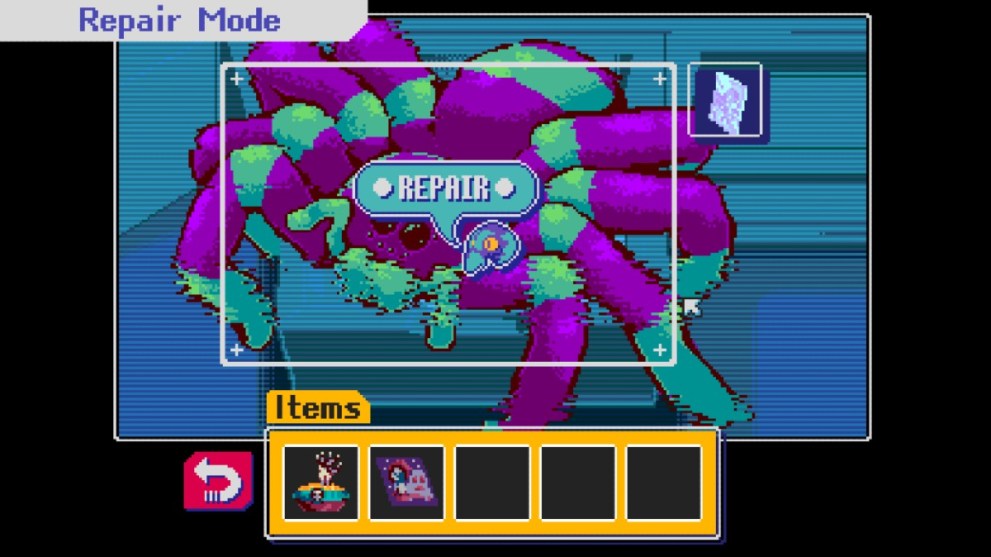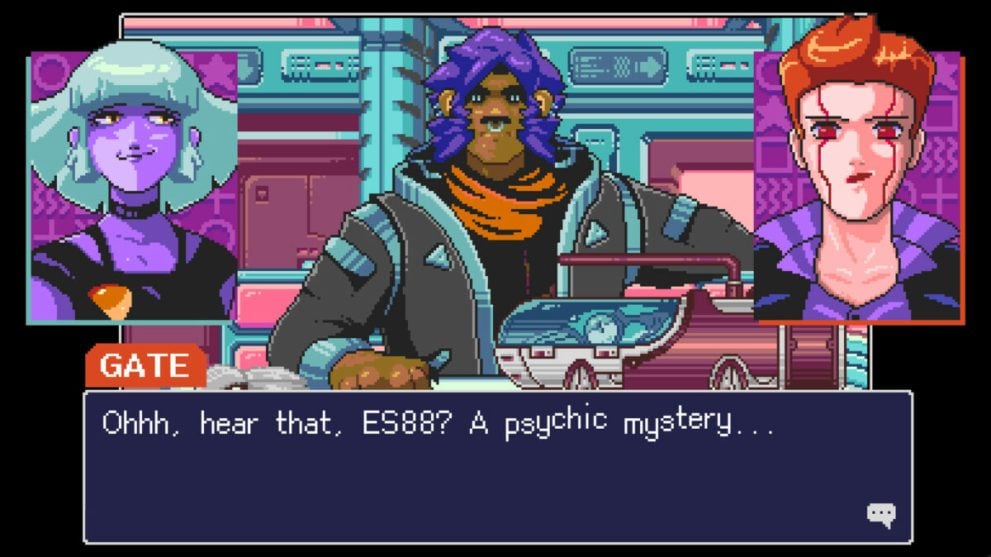Back when it was released in 2015, MidBoss struck gold with its old-school cyberpunk adventure, 2064: Read Only Memories. The game boasted a solid story, likable characters, and beautiful pixel art that had fans gushing. Over seven years later, a sequel, titled Read Only Memories: Neurodiver, is finally almost here.
To shed a little more light on Read Only Memories: Neurodiver, I sat down with MidBoss’s Creative Director, John “JJ” James, and CEO, Cade Peterson. Thanks to both for taking the time to discuss the upcoming sequel.
Twinfinite: What are going to be the biggest differences between 2064: Read Only Memories & Read Only Memories: Neurodiver?
JJ: For the most part it plays the same. It’s still a point-and-click adventure that has a lot of the stylings of Japanese adventure games from the late 80s and 90s.
The only thing that is really different outside of a visual update is that there aren’t really a huge variety of minigames. Last time we had map and maze puzzles; this time around, we decided to focus on one specific gameplay element: collecting relevant items in a memory and putting them into a fragment to repair it.
That is basically going to be the main gameplay outside of interacting with characters and exploring the environments like the first game.
Twinfinite: Will there be any characters that you think will stand out as Turing did in 2064: Read Only Memories?
JJ: We’ve already had a pretty warm response for ES88, the main character in this one. When people get to see more of ES88 and a character named Gate interacting throughout the game, we think they’re really going to like them together about as much as Turing.
Of course, Turing is going to be back, but they aren’t going to be as upfront and center as they were in the first game where they were kind of the mouth of the protagonist.
Cade Peterson: I think that people are really going to fall in love with ES88 and Gate, especially with ES88.
Twinfinite: Since you’re playing as a psychic detective, is this going to have that same mystery vibe with a lot of twists and turns in Read Only Memories: Neurodiver?

JJ: There will be some twists and turns, but we are not really going for any dramatic twists with Read Only Memories: Neurodiver. I kind of wanted something that felt like playing an anime or manga in a way.
Each chapter is like a small episode of that. There is still going to be a mysterious vibe to it. You are a psychic detective. You’re tracking down another rogue psychic who is hiding in people’s memories. So there’s still a mystery to uncover there as to how and why they are hiding in people’s memories and what exactly they are doing to these people and why are they attached to them.
Twinfinite: All you had to say was anime and manga, and you immediately had my attention. Are there any anime or manga that you used as inspirations or that you could compare Read Only Memories: Neurodiver to?
JJ: There are a lot of things very early in development that I would show our writers to catch them up to speed for a specific vibe that we are going for with this game. Of course, you can’t pass up Stooshi Kon’s Paprika, as we are dealing with going into people’s heads.
Other things like Seijun Suzuki’s Branded to Kill, which is a live-action movie, and Ai City are also really good inspirations. Ai City especially, as it is a very fun ride visually and musically, and its story doesn’t take itself super seriously. It just feels like a fun ride, and that is what I want with this—a fun ride for people to go through and think about after they’ve played it.
Twinfinite: What is one thing you’d say to someone who is interested in trying this game for the first time? What would be the draw for someone that is diving into the series for the first time?
JJ: I guess it is a little hard to say. It’s kinda filling in a niche. I guess if someone were interested in older games and at some point, whenever you were on Tumblr or Twitter, and you follow accounts posting old games for the PC88 or MSX, if they enjoy those, this is a game that is heavily inspired by those and that type of aesthetic and feel.
If you want to explore that, and not just dip their toes into getting old hardware or getting into emulation or a bunch of games that haven’t been translated, then try out this game.
Otherwise, if you aren’t too into that stuff and you like anime or retro-pixel art, then this is right up your alley.
Twinfinite: Obviously, the pixel art does look old school, but it’s very colorful and unique and is reminiscent of the style of the last game. How much time was put into the detail and effort of the backgrounds and everything to make it all pop?

JJ: So one of the major things we were waffling over in the beginning when it came down to the visuals was the color palette. We started off with a very limited color palette and then expanded it further to match older systems.
So the color palette we are working with is loosely based around the PC engine, more or less. Our engineer also had a fun idea when it came to limiting color channels for the game.
There’s only a limited amount of colors that can be displayed at once on the screen. Whenever it comes to fade-outs or fade-ins or those things, it can only work with what we have in our built-in color palettes.
So there’s a lot of natural color shifts that you’d see on older systems happening in our game. I was thrilled with that when I first saw it.
Everything is also pixel-perfect as far as movement goes. Outside of that, whenever it comes to character portraits, it is mostly just building off the experience that comes with animating most of the first game with that — experimenting more with expressions and snappier animations.
Twinfinite: Is there anything else you’d like to say to fans?
JJ: I hope you like it! And if you haven’t yet, please Wishlist us on Steam. We are going to be on other platforms as well. Everything is on the table for now – except for mobile, for now.
